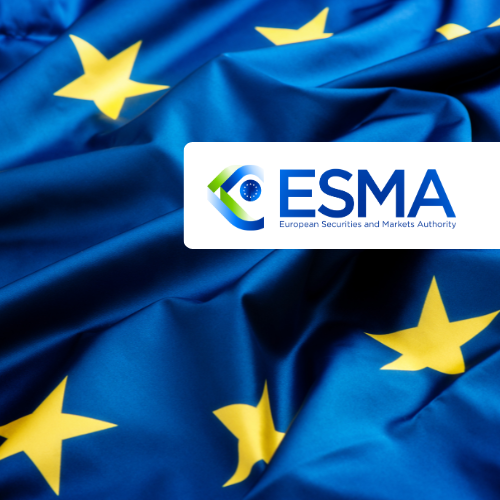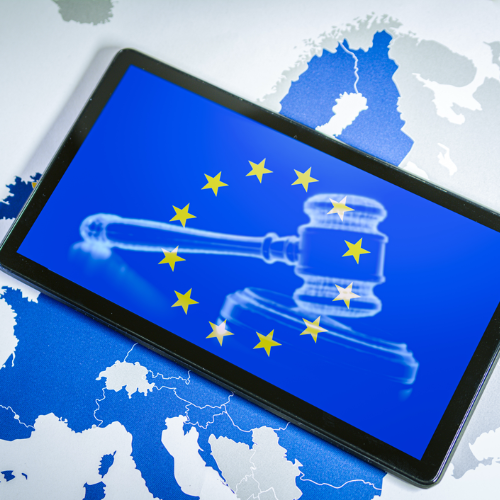While there were 61 changes in total, we provide a summary analysis of a sub-set based on five themes:
- Obligations and Prohibitions for Market Participants;
- Reporting Through Registered Reporting Mechanisms (RRMs);
- Transaction Reporting;
- List of Organised Marketplaces; and
- Inside Information.
Section 2.4 Obligations and Prohibitions for Market Participants
2.4.3. Obligation to disclose inside information.
- REMIT II maintains the core requirement for market participants to publicly disclose inside information related to energy facilities they own, control, or operate. The scope now explicitly includes hydrogen alongside electricity, gas, and LNG.
- A key procedural change mandates disclosure via ACER-authorised IIPs, which must ensure prompt access, usability, and continuity.
- Company websites are now secondary disclosure channels. Additionally, a delegated act due by 8 May 2025 will further define the authorisation and supervision of IIPs, reinforcing consistency and transparency in disclosures.
2.4.16. Registration Rules for Multi-Site and Third-Country Market Participants.
- Market participants must register only once under REMIT, regardless of how many EU Member States they operate in, based on Article 9(1) - a rule unchanged in REMIT II.
- However, REMIT II now provides deeper legal interpretation, referencing Court of Justice of the European Union (CJEU) case law and clarifying that participants should register in the country of their primary establishment, even if established in multiple Member States.
- A significant change introduces new obligations for third-country participants (effective 8 November 2024), requiring them to designate a representative in an EU country where they are active and register there.
2.4.24. Registration Obligations for Smaller Suppliers with Bilateral Contracts.
- Smaller suppliers that enter into reportable bilateral contracts remain classified as market participants under REMIT and must register with the relevant NRA under Article 9(1), even if they do not buy energy directly on organised marketplaces.
- The updated REMIT II expands the scope of wholesale energy products in Article 2(4)(a) to include hydrogen and LNG, and explicitly references natural gas. It also now covers contracts resulting from single day-ahead or intraday market coupling, reflecting deeper EU market integration.
- Additionally, REMIT II clarifies the legal link between the registration (Article 9) and reporting (Article 8) obligations, ensuring that registration is only required for transactions subject to reporting and improving legal definitions.
2.4.31. Registration Requirement for Underground Storage Owner.
- Owners of underground gas storage facilities who participate as counterparties in cushion gas auctions are required to register as market participants under REMIT, as these are considered reportable transactions.
- This remains unchanged, supported by Article 3(1)(vi) of Implementing Regulation 1348/2014, which states that natural gas supply contracts longer than two days are reportable, regardless of how they’re traded.
- REMIT II strengthens the legal basis by adding explicit references to Article 2(4)(e) (defining storage contracts as wholesale energy products) and Article 2(7) (defining market participants to include storage operators), providing clearer regulatory grounding for this obligation.
2.4.44. Obligations for Multi-Site Final Customers with Combined ≥600 GWh Consumption.
- A final customer that owns or controls multiple sites - each below 600 GWh/year but collectively reaching or exceeding 600 GWh - is considered a market participant under REMIT. However, registration and reporting are only required if:
- A single site consumes ≥600 GWh/year,
- The contract is traded on an organised marketplace, or
- The customer enters into sale contracts outside such a marketplace.
- REMIT II expands the definition of wholesale energy products to include hydrogen, LNG, and contracts linked to day-ahead/intraday coupling so the final customer entering into these contracts is a market participant.
- Additionally, the updated guidance introduces more conditional language regarding residual obligations (e.g., under Articles 4 and 5), suggesting that applicability may depend on individual case factors and marking a shift toward case-by-case regulatory interpretation.
*new* 2.4.58. Registration Rules for Norwegian Participants in Market Coupling.
- As a third-country under REMIT, Norwegian market participants involved in EU electricity market coupling must comply with Article 9(1) (as amended in 2024). They are required to designate a representative in any EU Member State participating in the coupling mechanism and register with that Member State’s NRA.
- If the participant also engages in trading other wholesale energy products, it is recommended they register in the Member State where that broader trading activity occurs, ensuring appropriate regulatory oversight across their operations.
Section 3.2. Reporting Through Registered Reporting Mechanisms (RRMs)
3.2.25. Restrictions on Market Participants Reporting OMP Transactions .
- Market participants - even if registered as RRMs or acting via subsidiaries - are not permitted to report their own standardised contracts executed on organised marketplaces (OMPs).
- Under Article 8(1a) of the updated REMIT, this reporting responsibility lies exclusively with the OMP. A new exception is introduced for Transmission System Operators (TSOs), who may act as both OMP and market participant. In such cases, a TSO registered as an RRM may report transactions stemming from activities like capacity auctions that they host.
- The updated guidance removes previous references to trade matching systems and data agreements, as the legal framework now directly assigns the reporting duty to OMPs, simplifying and clarifying the rule.
3.2.28. Completing Section 5 of CEREMP: Selecting RRMs and Intra-Group Reporting.
- When filling out Section 5 of the CEREMP registration form, market participants must have a contractual agreement in place with an RRM before selecting it from the public list - selection alone does not create a legal obligation for the RRM to report.
- RRMs used for intra-group reporting (e.g., Market Participant A reporting on behalf of other group entities) are still visible in the public list like any third-party RRM, though some entities (like ENTSO-E or ENTSO-G) may have restricted visibility.
- A new element under REMIT II is the anticipated delegated act by 8 May 2025, which will replace the current RRM registration process with a formal authorisation framework. This may impact how RRMs - including intra-group ones - are displayed and validated in Section 5 going forward.
3.2.34. OMP Reporting Obligations for Non-Standard Contracts.
- Under REMIT II, Organised Marketplaces (OMPs) are not obliged to report non-standard contracts or contracts executed outside their platforms. While OMPs may voluntarily assist market participants in reporting such contracts, this remains entirely optional.
- The legal reference has shifted from Article 6(1) of the Implementing Regulation to Article 8(1a) of REMIT, introduced by Regulation 2024/1106, which imposes mandatory reporting obligations on OMPs only for standardised contracts and order books.
- The revised guidance also removes outdated references to participant-initiated reporting agreements, reflecting the direct and automatic reporting responsibilities of OMPs under the new framework.
3.2.37. Reporting Non-Standard Contracts: RRM Requirements for Market Participants.
- Market participants may still choose to self-report non-standard contracts, provided they indicate this intention in Section 5 of the CEREMP registration form.
- However, under REMIT II, if they wish to report on behalf of themselves or counterparties, they must be authorised as an RRM under Article 9a of REMIT - a process that replaces the old RRM registration system and will be further detailed in a delegated act expected by 8 May 2025.
- Crucially, becoming an RRM is not mandatory for reporting non-standard contracts. Market participants may use third-party RRMs instead, which remains a fully compliant and practical option, especially for entities lacking the infrastructure to meet RRM authorisation requirements.
- References to older regulatory decisions, such as the REMIT Fee Decision, have been removed pending updates in the forthcoming authorisation framework.
3.2.44. Data Verification Responsibilities by Reporting Channel for Market Participants.
- Market participants are still required to take reasonable steps to ensure the completeness, accuracy, and timeliness of data reported to ACER via third parties, as outlined in Article 11(2) of the Implementing Regulation.
- REMIT II clarifies that these responsibilities differ based on the reporting channel:
- If the Organised Marketplace (OMP) reports the data directly (as RRM or via its selected RRM under Article 8(1a)), the market participant's burden is minimal.
- If the OMP selects a third-party RRM, the OMP holds the main responsibility for ensuring data quality, further reducing the participant's role.
- If the market participant selects the RRM, the participant must verify the entire reporting chain, from data submission through RRM processing to final transmission to ACER. While the MP isn't liable for failures solely caused by the RRM, they must show due diligence to the NRA.
- Legal references are now updated to align with REMIT Articles 8(1) and 8(1a), reflecting that OMP-reported data includes both matched and unmatched orders, shifting much of the reporting burden away from market participants.
- A forward-looking note reminds stakeholders that a delegated act due by 8 May 2025 may update RRM authorisation rules and data quality responsibilities.
Section 3.3 Transaction Reporting
3.3.23. REMIT Applicability to Biogas Supply and Transportation Contracts.
- REMIT applies to biogas supply and transportation contracts if the biogas can be technically and safely injected into and transported through the natural gas system. This core condition remains unchanged. However, under REMIT II, key updates include:
- A revised legal basis: references now align with Directive 2024/1788, Article 2(1) from the updated EU Gas Package, replacing the older Directive 2009/73/EC.
- Modernised terminology: the definition of “natural gas” now explicitly includes biomethane and other renewable gases, provided they meet required system compatibility standards.
- These changes ensure that REMIT reflects current energy transition goals, integrating renewable gases like biomethane into the regulatory scope and supporting the EU’s REPowerEU and Green Deal objectives.
3.3.24. REMIT Scope for Derivatives Delivered Outside the EU.
- REMIT applies to derivative contracts related to electricity, natural gas, or hydrogen that are produced, traded, or delivered in the EU, even if final delivery occurs outside the EU.
- However, under Article 3(1)(a)(viii) of the Implementing Regulation, only contracts with delivery inside the EU are subject to reporting obligations. Even when reporting is not required, market abuse and inside information rules still apply.
- REMIT II introduces two key updates:
- Hydrogen is now fully included within the scope of wholesale energy products and derivative contracts.
- New language from Article 2(4)(b) adds that REMIT covers derivatives tied to day-ahead and intraday market coupling, even if delivery into the EU is indirect or flexible.
3.3.30. Reporting Gas Storage Nominations.
- Gas storage nominations are not currently reportable as trades under the existing Commission Implementing Regulation (EU) No 1348/2014. Instead, they are subject to fundamental data reporting under Article 9, and this operational framework remains in place until further regulatory updates.
- REMIT II introduces key changes:
- Storage contracts and related derivatives are now formally included in the definition of wholesale energy products under Regulation (EU) 2024/1106, marking a significant expansion in REMIT scope.
- However, trade reporting of storage nominations cannot begin until the Implementing Regulation is revised to detail the reporting mechanics.
- The updated guidance includes transitional language, clarifying that new obligations will only apply once those revisions are finalized, giving market participants time to prepare for eventual compliance shifts.
3.3.34. Scope of LNG Supply Contracts with EU Delivery.
- Contracts for the supply of LNG with delivery in the EU remain firmly within the scope of REMIT as wholesale energy products, based on Article 2(4)(a). The jurisdictional trigger continues to be delivery within the EU.
- Under REMIT II, the legal framing is now more streamlined and self-contained:
- It eliminates references to external legislation like Directive 2009/73/EC, focusing instead on REMIT’s own definitions.
- It introduces a broader scope under Regulation (EU) 2024/1106, referencing that contracts for electricity resulting in EU delivery via market coupling are also now covered under the same provision.
- While the inclusion of electricity contracts via market coupling doesn’t directly affect LNG, it reflects REMIT II’s broader definition of wholesale energy products and ensures consistent application across energy types.
3.3.44. Are Virtual Trading Points (VTPs) Organised Marketplaces Under REMIT II?
- Virtual Trading Points (VTPs) are not automatically considered Organised Marketplaces (OMPs) under REMIT.
- Whether a VTP qualifies as an OMP depends on whether it offers "characteristic services" of an OMP- such as price formation, order matching, or a multilateral trading system - as now defined in Article 2(20) of REMIT (updated from Article 2(4) of the Implementing Regulation).
- If a natural gas supply contract is concluded at a VTP for a single consumption unit with technical capability below 600 GWh/year, it remains non-reportable, regardless of whether the VTP is considered an OMP.
- REMIT II also shifts guidance from a 2014 public consultation to Annex IX of ACER’s TRUM, the central and regularly updated reference for determining OMP status. The updated version clarifies that VTPs typically act as virtual entry/exit points without capacity booking, and that their classification depends on functional market behaviour, not just infrastructure.
3.3.48. Reportability of Natural Gas Storage Contracts.
- Natural gas storage contracts that specify a volume, price, and a contractually agreed return obligation are now explicitly classified as wholesale energy products under REMIT II (Regulation 2024/1106).
- This reflects a significant legal shift from earlier interpretations under Article 2(4), where reportability depended on whether the contract involved a transfer of ownership versus mere possession (e.g., lease/sublease).
- While such contracts are now in principle reportable, actual reporting cannot begin until the Implementing Regulation (EU) No 1348/2014 is updated to include the relevant technical standards.
- The updated guidance removes previous case-by-case scenarios and instead focuses on the broadened legal classification introduced by REMIT II, while clearly stating that reporting obligations will apply only after the REMIT Implementing Regulation is in place.
3.3.51. Battery Storage: When Are Contracts Reportable?
- Contracts related to battery storage are not automatically reportable under REMIT. Reporting obligations arise only if the battery storage operator engages in market transactions i.e., buying and selling electricity which makes them a market participant.
- Under REMIT II (Regulation (EU) 2024/1106), storage contracts and related derivatives (including those involving battery storage) are now formally classified as wholesale energy products. However, these contracts will only become reportable once the REMIT Implementing Regulation is updated to define the technical standards for such reporting.
- The updated version removes earlier practical distinctions such as the difference between using a battery for trading (reportable) versus for passive storage (not reportable, though nominations may be) leaving a temporary gap in operational guidance.
- Until the Implementing Regulation is revised, market participants should monitor developments and be prepared to adapt once reporting requirements are formalised.
Section 3.5 List of Organised Marketplaces
3.5.3. Are Persons Professionally Arranging Transactions Considered Organised Marketplaces.
- Under Article 8(4)(d) of REMIT, organised marketplaces (OMPs) are a specific subset of entities professionally arranging or executing transactions in wholesale energy products. While all OMPs fall within this broader category, not all persons professionally arranging or executing transactions qualify as OMPs.
- REMIT II updates the terminology to align with modern EU regulatory language (in line with MiFID II), and explicitly recognises execution alongside arrangement. It also reinforces that OMPs are subject to specific monitoring and reporting obligations under Article 15 of REMIT.
- For practical interpretation, the updated guidance directs market participants to Annex IX of ACER’s Transaction Reporting User Manual (TRUM), which provides detailed criteria for determining whether an entity qualifies as an OMP- crucial for compliance assessments and avoiding incorrect assumptions about regulatory status.
Section 3.7 Inside Information
3.7.9. Disclosing Emission Allowance-Related Inside Information.
- ACER does not refute or accept whether EUA related inside information should be reported or not, rather that if a firm elects to disclose, it should do so via an Inside Information Platform (IIP).
- Market participants holding inside information relevant to emission allowances - even if the information qualifies solely under REMIT - must disclose it in a timely and effective manner as required by Article 4(1) of REMIT. The use of IIPs listed on the REMIT Portal and meeting ACER’s minimum quality standards is strongly encouraged.
- REMIT II introduces several key updates:
- Fallback to own websites is no longer mentioned, signalling that disclosure is now expected to occur exclusively via IIPs, reinforcing a shift toward centralised, auditable platforms.
- Additional emphasis is placed on Chapter 4.2.1 of ACER’s Guidance, which now explicitly helps market participants determine what qualifies as inside information, not just how to disclose it - particularly useful when navigating overlapping regimes like REMIT and MAR.
- A forward-looking note reminds participants that by 8 May 2025, the Commission will adopt a delegated act to formalise the authorisation and supervision of IIPs, potentially impacting both the selection of disclosure platforms and participant obligations.
3.7.24. Non-EU Facilities: When Is Information About Them Considered Inside Information?
- Under Article 2(1) of REMIT, information about a facility located outside the EU qualifies as inside information only if it relates directly or indirectly to a Wholesale Energy Product (WEP) - defined in Article 2(4) - and is non-public, precise, and likely to affect EU WEP prices.
- REMIT II introduces key updates:
- Expanded WEP Categories: The new version reflects Regulation (EU) 2024/1106, listing six categories of WEPs, now including:
- LNG contracts,
- Electricity delivered via market coupling,
- Storage contracts and their derivatives for electricity and gas in the Union.
- Simplified Structure: REMIT II removes prior scenario-based breakdowns (e.g., for supply vs. transportation), replacing them with a clear, consolidated example, improving clarity and usability.
- Storage Explicitly Included: Contracts and derivatives related to electricity or gas storage within the EU are now recognised as WEPs, capturing a broader range of energy market activities.
- Reference to ACER Guidance: The updated text directs users to Chapter 4 of ACER’s Guidance for further practical support, ensuring stakeholders understand both legal thresholds and effective disclosure practices.


